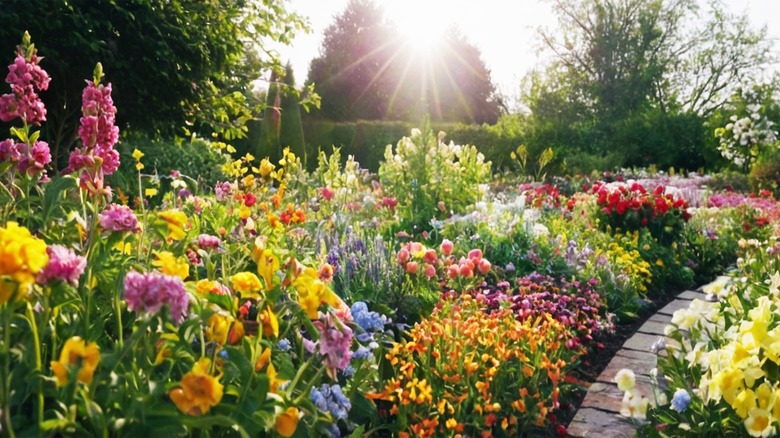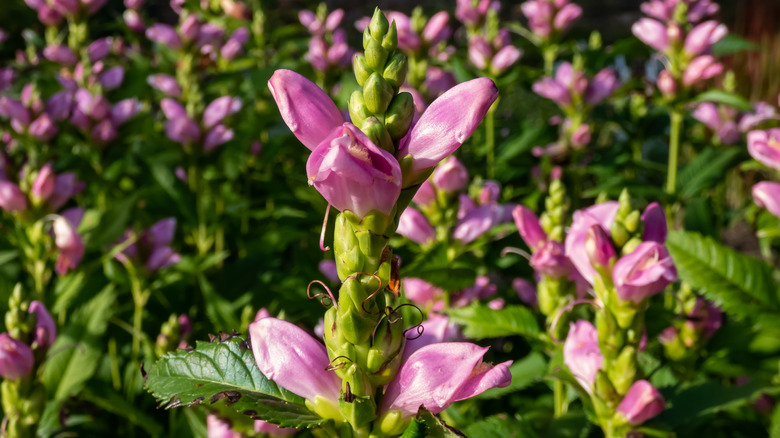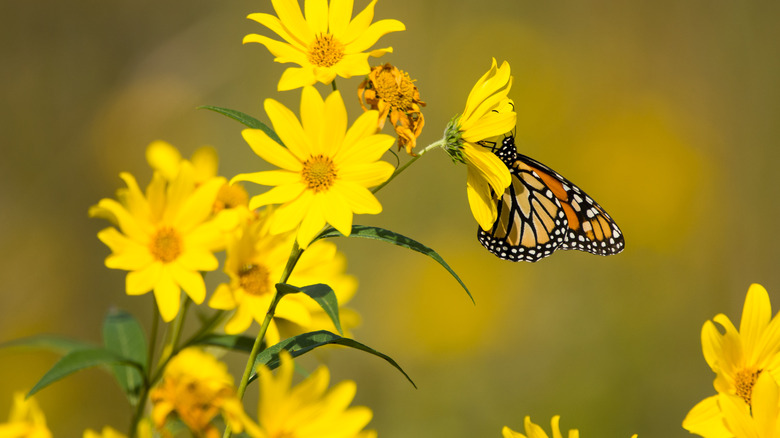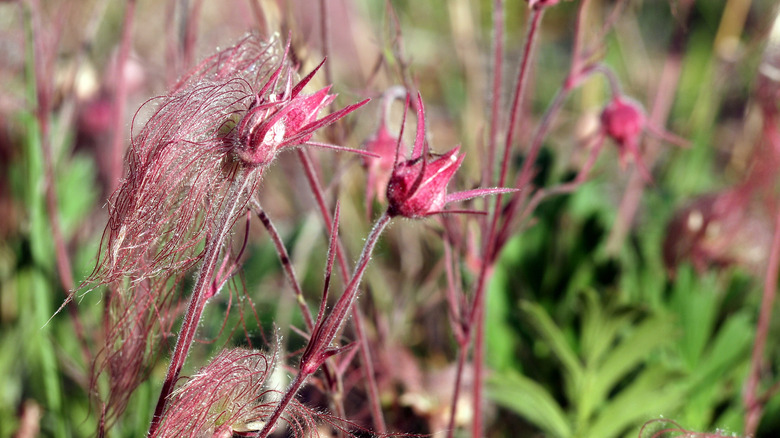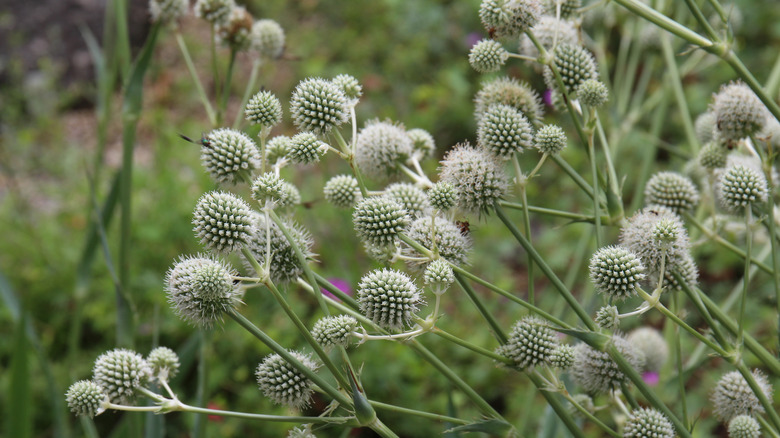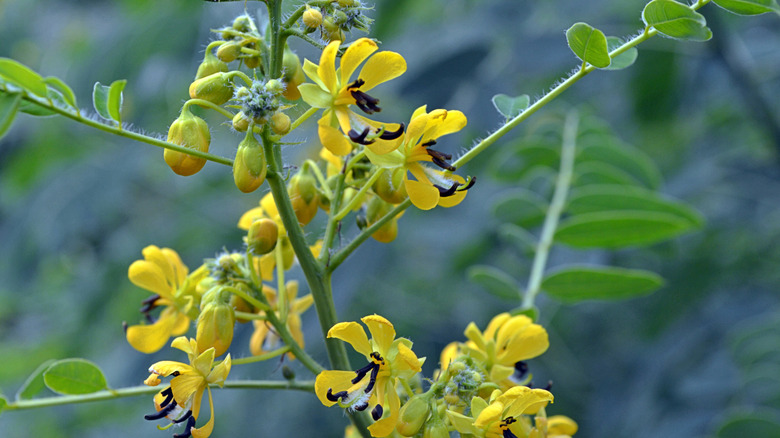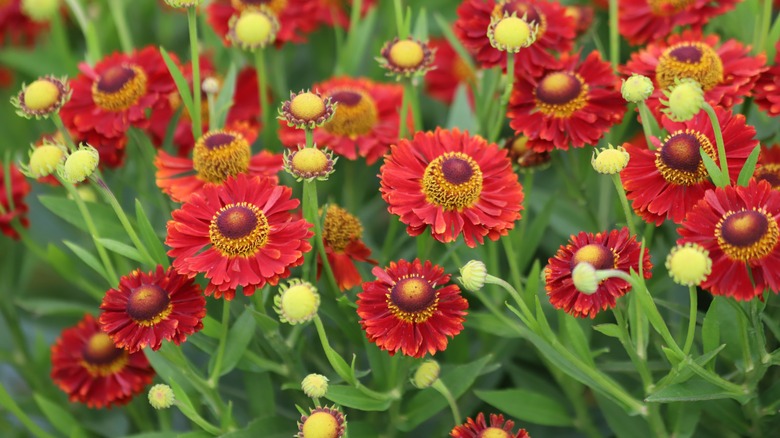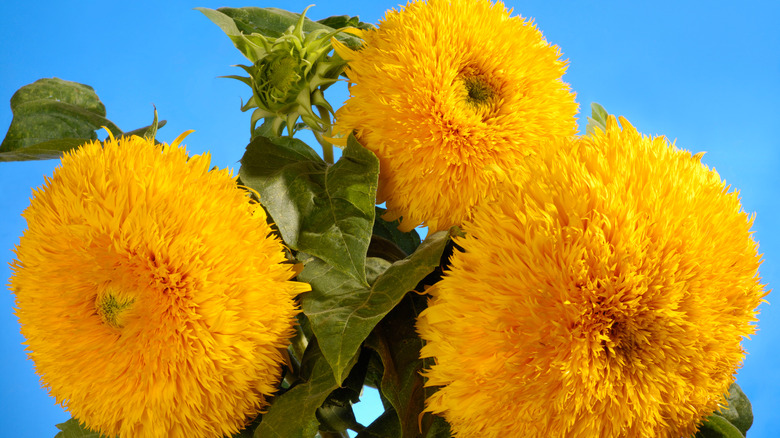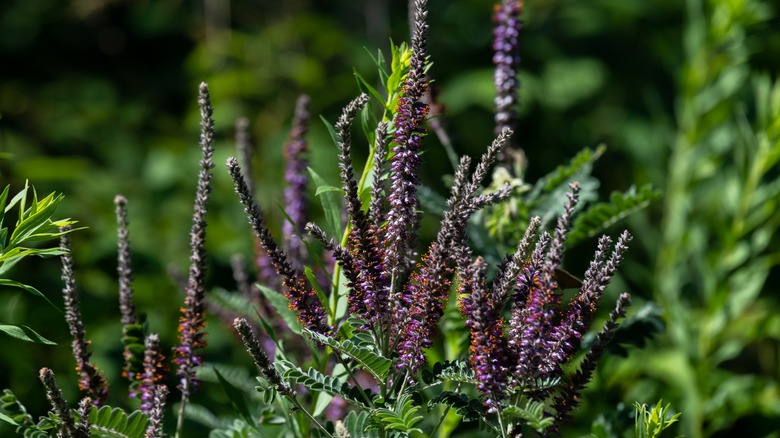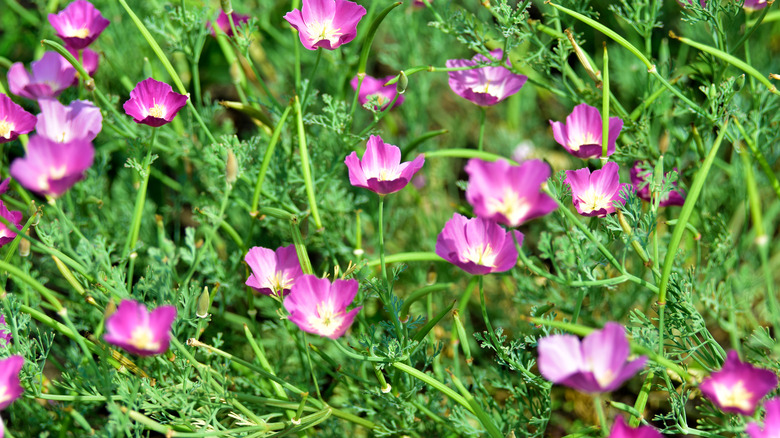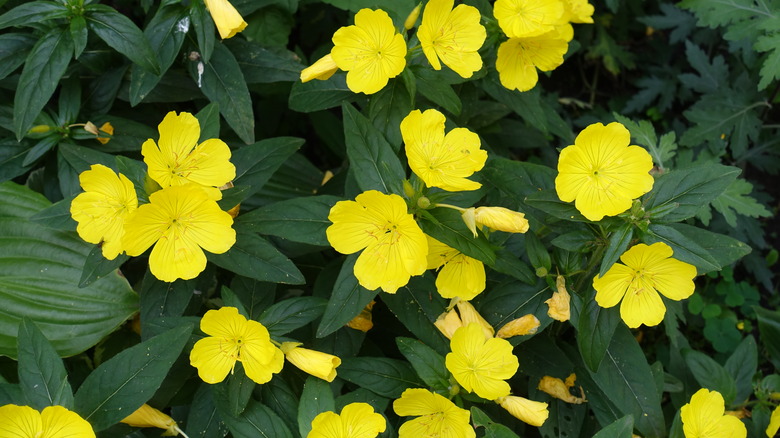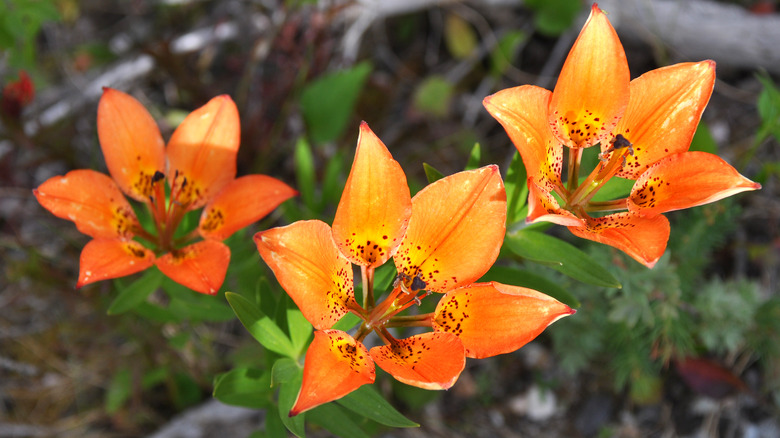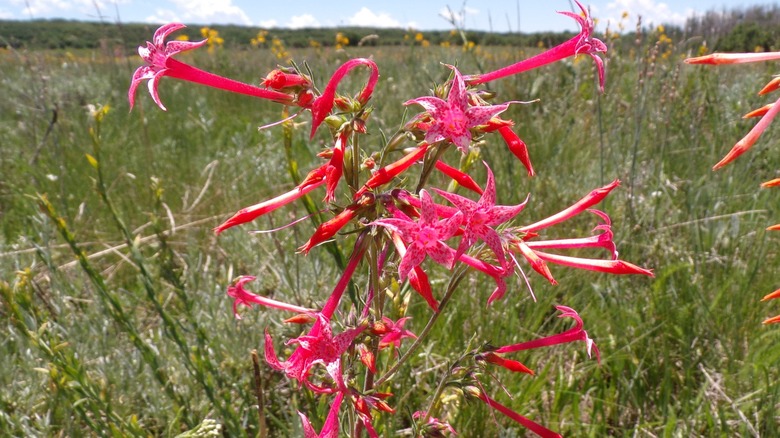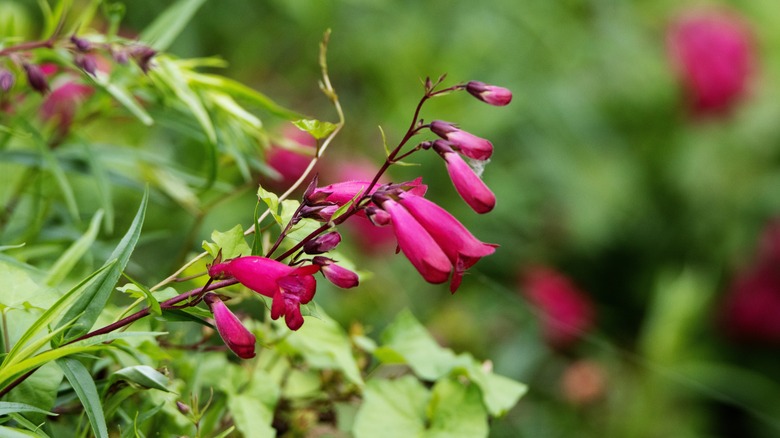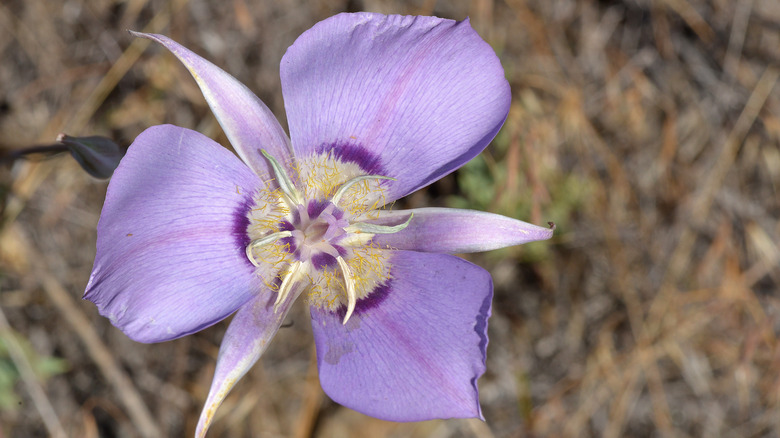18 Stunning Lesser-Known Flowers That Are Definitely Worth Growing In Your Garden
There's no denying the beauty of garden favorites like tulips, petunias, and zinnias. Although the tried-and-true species never go out of style, sometimes it's fun to spice up your garden with lesser-known flowers. Even better, there are dozens of stunning natives that you may not have heard of, but they bring just as much color and pollinator appeal as the popular plants you already love. Plus, because they're acclimated to your climate, they're often an easier-to-grow option that also doubles as eye-catching, conversation-starting additions to your floral display. They also tend to be more disease- and pest-resistant and are less likely to become invasive.
Choosing unique natives isn't just about the charm they bring, but it's also about helping out wildlife. Each animal and insect species has its own preferences when it comes to flower shape, size, and bloom time. By planting a wide variety of diverse species, you'll not only help your favorite pollinators and other backyard visitors, but you'll also have a better chance of attracting a broader mix of them. If you're ready to branch out, here are some underrated but beautiful native flowers that are well worth adding to your garden, including teddy bear sunflowers, turtlehead plants, and prairie smoke.
Turtlehead
If you want to bring more pollinators into your yard, consider adding a variety of turtlehead (Chelone spp.) to the display in USDA hardiness zones 3 to 9. Hummingbirds, bees, and butterflies are among the pretty visitors you'll see fluttering around this plant's spikes of unique pink, red, or white blooms. As the common name suggests, each flower looks like a tiny turtle gently opening its mouth. While this plant prefers full sun, it can tolerate a bit of shade. Turtlehead plants love moist, well-drained soil, though they can handle drier conditions as they establish.
Compass plant
It's hard not to love sunflowers, but there's another bright yellow native you may want to consider adding to your garden. Compass plant (Silphium laciniatum) is another tall, showy plant in the Asteraceae family with large, sunny, disc-shaped blooms growing along 3- to 10-foot-tall stalks. Butterflies will stop by to drink their nectar when flowers emerge in summer, while goldfinches and other birds will flock to your yard for their seeds in fall. Use compass plants to add height, color, and texture in zones 3 to 8 in well-drained soil and full sun.
Prairie smoke
Named after its pink, feathery seedheads, prairie smoke (Geum triflorum) is an uncommon native perennial that looks just as beautiful when flowering as it does when in seed. In late spring through early summer, its bell-shaped, reddish-pink to purple flowers emerge in clusters of three. As its blooming season wraps up, the flowers give way to soft, wispy seedheads that resemble a cloud of pink-tinged smoke at a distance. You can grow this stunning prairie plant in zones 3 to 7 in regions with cool summers. Plant in well-drained soil in full sun or light shade during hot afternoons.
Rattlesnake master
Rattlesnake master (Eryngium yuccifolium) is an herbaceous perennial with distinctive globe-like flowerheads covered in dozens of tiny flowers that butterflies, bees, moths, and other pollinators love. With their unique charm, honey-like fragrance, and stiff, upright stems, they make the perfect addition to a cut flower garden. Naturally growing in woodlands and prairies across the central United States, these lesser-known flowers are easily grown in a sunny spot in zones 3 to 8. They can handle nearly any soil type you stick them in, though they prefer dry, sandy, well-drained soil.
Maryland senna
Being a wildlife-friendly native perennial, low-maintenance, and downright gorgeous with its showy yellow, cup-shaped blooms, there's a lot to love about Maryland senna (Senna marilandica). Although the flowers don't produce nectar, ladybugs, parasitic wasps, and other beneficial insects will find the sugary liquid at the glands at the base of the leaves. Plus, its pollen draws in bumblebees, birds eat the seeds in fall or winter, and several butterfly species use it as a host plant. Hardy in zones 4 to 10, Maryland senna grows best in partial to full sun and moist, rich, loamy soil.
Sneezeweed
Despite its common name, sneezeweed (Helenium autumnale) won't trigger your allergies, and it's not actually a weed. Instead, it's a profusely blooming wildflower in vibrant reds, oranges, and yellows that will brighten up any garden for months starting in late summer. Plus, this native plant will attract bees, butterflies, and even songbirds to your yard. It's hardy in zones 3 to 8, growing best in rich, moist soils in sunny gardens. Although naturally moisture-lovers, some hybrids are more drought-tolerant than others.
Azure bluet
Meet azure bluet (Houstonia caerulea), a low-growing perennial that may be small and delicate, but makes a big impact in the garden. Its four-lobed, star-shaped flowers are pale blue with bright yellow centers, providing an interesting pop of color in your yard from mid-spring into mid-summer. They're a big hit with pollinators like bees and butterflies, and they're a host plant for the thyris maculata moth. Naturally popping up in fields and woodlands across the Midwest and Eastern United States, bluets are hardy in zones 3 to 8. They thrive in part shade and most soil types.
Teddy bear sunflower
Although a member of the sunflower family, the aptly named teddy bear sunflower (Helianthus annuus 'Teddy Bear') produces giant, fluffy blooms that more closely resemble dandelions. The bright yellow, fuzzy flowerheads are popular among pollinators like butterflies and bees in summer, while the seeds that emerge in fall will have songbirds flocking to your yard. Growing up to 7 feet tall, they make an inspiring living fence or border and can grow as annuals in zones 1 to 10. Teddy bear sunflowers are true to their name, thriving in full sun and humusy, slightly alkaline, well-drained soil.
Lead plant
Leadplant (Amorpha canescens) is a beautiful ground cover that's great for preventing soil erosion with its deep root system. From midsummer through fall, it puts out showy flower spikes covered in small, blue or purple tubular blooms. Many pollinators will stop by, but its nectar is especially important to native bees. While it's hardy in zones 2 to 9, it may die back in regions with freezing winters. It's a full-sun lover and will spread toward the light when in shade. Lead plant doesn't mind dry or poor soils as long as they're well-drained.
Purple poppy mallow
Sometimes nicknamed "winecup" because of its purplish merlot hues, purple poppy mallow (Callirhoe involucrata) is the perfect choice if you want to add some rich color from late spring through summer. Their pretty cups are loved by pollinators, most notably the gray hairstreak butterfly, which uses this plant as a larval host. Native to the central United States, it's the perfect plant for anyone in zones 4 to 8. Winecup thrives in well-drained soil that stays moist but can tolerate drier conditions once established. Plant in a sunny area, and it may even self-seed.
Narrow-leaved sundrops
With pretty yellow flowers and attractive, dark green foliage, narrow-leaved sundrops (Oenothera fruticosa) make a gorgeous addition for gardens in the eastern half of North America. It's a beautiful perennial for a sunny rock garden or pollinator plantings, attracting bees, butterflies, skippers, and other favorites. For some, its quick growth may be a positive trait, though it can get weedy if not properly managed. That said, it rarely becomes aggressive. Sundrops are easily grown in zones 4 to 8 in sunlit yards in moderately fertile, well-drained soil.
Wood lily
Wood lilies (Lilium philadelphicum) are dazzling lilies that will bring color to your garden in zones 4 to 7, especially if your region has cooler summers. Although they're considered one of the most widespread true lilies across North America, the species is declining in the wild due to habitat loss. Like other members of the Liliaceae family, this bright, blood orange native is like a magnet to pollinators, particularly hummingbirds and butterflies. Wood lilies put out their best blooms in full sun and prefer moist, well-drained sandy or loamy soil.
Slender false foxglove
The slender-leaved foxglove (Agalinis tenuifolia) is what's known as a hemiparasitic plant, meaning it can photosynthesize to create food but can also use certain nearby grass roots to get a nutrient boost. Each of their dainty, purplish-pink, funnel-shaped flowers blooms once per day, though more will appear in their place from late summer into fall. As a host plant for several species, slender-leaved foxglove will fill your garden with a variety of butterflies and specialized bees. This showy annual is hardy in zones 2 to 11, thriving in well-drained soil in full sun to partial shade.
Wild quinine
A smaller member of the sunflower family (Asteraceae), wild quinine (Parthenium integrifolium) is a low-maintenance perennial wildflower that's native to the eastern United States and parts of Wisconsin and Arkansas. Its small, white, button-shaped flowers last for weeks in late spring or early summer. Not only are they great for spicing up your yard, but they also make interesting additions to cut floral arrangements. Wild quinine is hardy in zones 4 to 8, preferring well-drained soil in a sunny garden.
Colorado four o'clock
If you want a tropical look in a desert garden, look no further than Colorado four o'clock (Mirabilis multiflora). Its large, magenta, tubular flowers last for months, often blooming from early spring to frost in zones 4 to 8. True to their common name, the flowers close in the morning but open each day in the late afternoon. These beauties get pretty big (up to 2 feet tall with a 6-foot spread), giving you an explosion of fragrant flowers — one established plant can produce hundreds. They thrive in full to partial sun and tolerate most soils.
Scarlet gilia
Scarlet gilia (Ipomopsis aggregata) is a unique flower that attracts hummingbirds with its color-changing blooms. Its long, narrow, tubular flowers are bright red at the start of the season, typically drawing in hummingbirds as their primary pollinators. As the season continues, they fade to a pinkish white, which is more easily seen by moths at night. It's sometimes nicknamed "skunkflower" due to a musky scent that may be off-putting to humans but is ultra appealing to the nocturnal moths. Hardy in zones 6 to 9, scarlet gilia is drought-tolerant and prefers well-drained soil in full sun.
Rosy desert beardtongue
Another excellent choice for warm, dry climates is the lesser-known rosy desert beardtongue (Penstemon pseudospectabilis), a gorgeous native perennial with rich pink tubular flowers that are like magnets to hummingbirds. They're hardy in zones 5 to 9, blooming for several weeks in spring to summer, depending on your region. As plants that naturally thrive in arid regions, they like dry, well-drained gravelly or sandy soil. They can even tolerate poor soils, making them a great low-maintenance pick for those wanting to jump on the xeriscaping trend. The best flowering is in full sun, though they can handle some shade.
Sagebrush mariposa lily
If you want to plant unique flowers that will have your neighbors staring, you can't go wrong with the stunning sagebrush mariposa lily (Calochortus macrocarpus). Rather than the classic trumpet shape of most Liliaceae members, the lilac-purple flowers have three broad petals and three narrower sepals that create more of a cup-like form. They're trickier to grow than most, as the bulbs must stay bone dry from mid-summer to late fall to succeed. If you're up for the challenge, you can grow them in zones 5 to 7 with full sun and well-drained, sandy soil.
